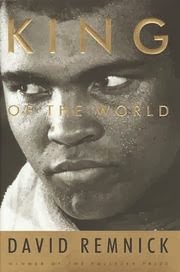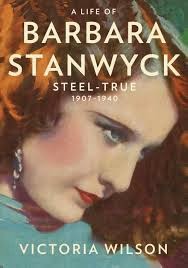Masters, Alexander. A Life Discarded: 148 Diaries Found in the Trash. New York: Farrar, Straus and Giroux. 2016. Print.
First Sentences:
Lansky, Aaron. Outwitting History
One breezy afternoon, my friend Richard Grove was mooching around Cambridge with his shirt hanging out, when he came across this skip [dumpster]....Clustered inside a broken shower basin, wedged into the gaps around a wrenched-of door, flapping in the breeze on top of the broken bricks and slates, were armfuls of books.
Who can resist a story about 148 notebooks recovered from a trash bin in Cambridge, England? And when these notebooks turn out to be a multi-volume, 15,000-page diary covering over 50 years, well, I'm hooked. Such is the lure of Alexander Masters' A Life Discarded: 148 Diaries Found in the Trash, and his dogged journey to read these missives and discover the identity and life of the author. And, incidentally, who threw these books into the dumpster? And why?
Covering the years from 1952 through 2001, a few months before they were discarded/found, the diaries recount the thoughts, events, and dreams of one unknown person. But Masters slowly uncovers certain interesting facts about this writer. First, the person, referred to as "I" (male or female?) was 13 years old when the first entries appeared, a date known because there were entries throughout the volumes describing the diarist's birthdays, Such chronicles continued until the author was 62.
But where did the diarist live? Where did she go to school? What did the numerous cartoonish drawings appearing throughout the notebooks mean? And who were the fondly-referred to but highly critical "E" (a lover?), the detestable Peter ("Stinky Peter", her "gaoler") and the caricatured, flat-faced "Clarence"?
Masters consults with a graphologist to understand what traits the diarist's handwriting might reveal and why the lettering drastically changes over the years. He also meets with a private detective who specializes in missing persons, and talks with archivists who look at histories of the areas mentioned. He visits a potential school where 'Not-Mary" might have attended, explores the ruins of a manorial house that might have been her home, and interviews a former art teacher (who does not remember any student, much less the diary's "I").
The diaries are the frenzied writings in tiny script of the events of an unknown mind as she works her way through life, people, jobs, and loves. She seems to be artistic, sensitive, troubled, and a bit of a hypochondriac. Other that these brief peeks into her life, it is dogged work for Masters to uncover and interpret any writing to reveal the diarist.
What drives the book is the honesty and truthfulness of the diarist who writes what she feels, thinks, and dreams, always, on good days and bad. An intimate look into the mind of one person over five decades as she lives her life.
Covering the years from 1952 through 2001, a few months before they were discarded/found, the diaries recount the thoughts, events, and dreams of one unknown person. But Masters slowly uncovers certain interesting facts about this writer. First, the person, referred to as "I" (male or female?) was 13 years old when the first entries appeared, a date known because there were entries throughout the volumes describing the diarist's birthdays, Such chronicles continued until the author was 62.
Masters refers to the author as "I" or "Not-Mary" since there was an entry about a teacher who forgot the diarist's name, called the writer :Mary," and was corrected that her name was "not Mary." Of course, that meant the writer was a woman. [Sorry, this is not exactly a spoiler since the discovery occurs in the first few pages of the book.]A person can write five million words about itself, and forget to tell you its name. Or its sex.
But where did the diarist live? Where did she go to school? What did the numerous cartoonish drawings appearing throughout the notebooks mean? And who were the fondly-referred to but highly critical "E" (a lover?), the detestable Peter ("Stinky Peter", her "gaoler") and the caricatured, flat-faced "Clarence"?
Masters consults with a graphologist to understand what traits the diarist's handwriting might reveal and why the lettering drastically changes over the years. He also meets with a private detective who specializes in missing persons, and talks with archivists who look at histories of the areas mentioned. He visits a potential school where 'Not-Mary" might have attended, explores the ruins of a manorial house that might have been her home, and interviews a former art teacher (who does not remember any student, much less the diary's "I").
The diaries are the frenzied writings in tiny script of the events of an unknown mind as she works her way through life, people, jobs, and loves. She seems to be artistic, sensitive, troubled, and a bit of a hypochondriac. Other that these brief peeks into her life, it is dogged work for Masters to uncover and interpret any writing to reveal the diarist.
...the rotted pages were filled with handwriting, right up to the edges, as though the words had been poured in as a fluid.Challenging, fascinating, frustrating, and humorous, A Life Discarded is a true-life detective tale with real people with genuine emotions and thoughts. It can be eerie, as Masters discovers, to read a woman's innermost thoughts, but he continues on with his quest to unravel the mystery. But always in the back of his mind is a slight hesitation, even after five years, to find the answers to his questions and solve her identity, and thus end this fascinating journey.
What drives the book is the honesty and truthfulness of the diarist who writes what she feels, thinks, and dreams, always, on good days and bad. An intimate look into the mind of one person over five decades as she lives her life.
"I cling to life very desperately -- feel I could do great things -- very afraid of physical disaster, nothing could be worse --could not bear to die before I had given of my gifts to the community -- have already worked & suffered so to bring my gifts towards fruition."
Happy reading.
Fred
(See more recommended books)
________________________________________
If this book interests you, be sure to check out:
________________________________________
If this book interests you, be sure to check out:
Lansky, Aaron. Outwitting History
One man's effort to discover and preserve Yiddish books from the trash and discarded libraries of people who brought them when they fled Europe during World War II. (previously reviewed here)






